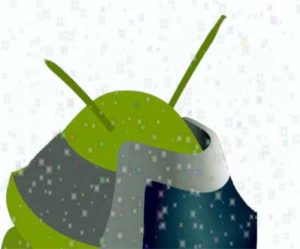This is the era of computers. They have conquered the world and influenced all walks of our lives. A computer is a system that helps us solve some day-to-day issues and complete some tasks. In technical words, it can be defined as a system that takes inputs from the user and then computes the data to give the desired output. A computer system has two essential components, called software and hardware.
Hardware is a group of components that are tangible. They are the physical parts like monitor, mouse, CPU, etc. The software is the intangible part which is the main governing body of a computer. The software consists of an operating system. The name itself suggests that it is responsible for all the operations and functions of the computer system.
It manages the resources available for a computer like software, hardware components, memory management, and process management. It offers services to the computer programs which are executed on the system.
Quick Links
Examples of Operating Systems
There are several operating systems built with the view of providing its services to the computer systems. Some of them are Microsoft Windows, macOS, Linux, and Chrome OS.
The MacOS was designed especially for all the computing devices manufactured by Apple like an iPhone, MacBook, etc.
Microsoft is a big giant in developing operating systems. Windows is the name of its operating system which has more than 20 versions in use. Linux is also one of the leading operating systems and has attracted many users. The reason behind the development of so many operating systems is the need for specific service provision.
Every device has a unique system. To cater to its needs, the operating system used with it should have the needed functionalities. Hence, dedicated versions of OS have come into play.
About the Windows Operating System
The American company called Microsoft developed an operating system named Windows. It has the honor of being the very first operating system with a graphical interface. That made it much easier for the users to access the functionalities offered. The Windows family is enormous and widespread. There are numerous versions of Windows OS.
Some of them work on personal computers like Windows 98, Windows XP, Windows Vista, Windows 8 and Windows 10. Some are used for server computers like Windows Server, Windows Home Server, and Windows CE.
In addition to these, the recent versions of Microsoft are compatible with tablets, mobile phones and embedded devices called Windows Phone. The large family of Windows is classified into subfamilies named Windows NT, Windows IoT, and Windows Embedded Compact.
Microsoft developed the first OS for IBM called MS-DOS. It was compatible with all IBM-based personal computers. The initial versions were quite crude and straightforward.
The later versions grew to become more sophisticated because of the incorporation of some features of the minicomputer operating systems. The latest version used for personal computers is Windows 10.
It has features like the Start Menu, the ability to run Windows Store apps on the desktop rather than in the full-screen mode and the virtual desktop facility. The users using older versions of Windows can migrate and upgrade to newer versions.
Some important features and peculiarities of Windows OS are:
- Start Menu and the Taskbar: The Start Menu has always been the best part of a Windows OS. It is a powerful tool to access the basic functionalities of the OS. The taskbar is very responsive and explanatory.
- Search operations and Folder Organization: With the Windows OS, it is easy to search for the files or folders you want. Also, the organization of the data stored in the system is effectively done.
- Compatible with Lower Lever Hardware: The Windows OS has the reputation of making all the hardware components look reasonably excellent and sophisticated.
- Accessible to Use: The need for a good OS can be defined as the need for a layperson to use a computer to the best of its capacity. Windows provides ready-made solutions for various tasks to be done by a computer. That makes its use more comfortable.
- Desktop and Interface: The desktop of Windows is known to compact more information within its range. The tiles on the Start Screen are customizable and can be designed according to the user’s preference. The interface of Windows is graphical, making it easily comprehensible.
About the Linux Operating System
Linux is a Unix-like operating system that is based on the Linux kernel. It was released by Linus Torvalds in September 1991 and packaged in Linux Distribution. It can be used for personal computers, server computers, and mainframe computers.
Linux can be used on embedded systems as well as televisions, routers, video games consoles, and smartwatches. Many smartphones operate on operating systems which are derivatives of Linux. Even Android makes use of the Linux kernel. Also, it is honored to be the only operating system used on the TOP500 Supercomputers since 2017.
In a Linux OS, the Linus kernel which is a monolithic kernel handles all the process management, access control, networking and file system management. The GNU userland is a part of the Linux kernel responsible for the implementation of the functions and system calls. The user interface is called the shell and has two parts, viz., the Command Line Interface (CLI) and the Graphical User Interface (GUI).
There are several versions of Linux distribution packages like Ubuntu, Linux Mint, OpenSUSE, PCLinuxOS, Debian, and Puppy Linux. These versions have distinct characteristics based on their desired functionalities, the device on which they are to be installed and the nature of usage.
Some important and beneficial features of Linux are as follows.
- Open Source: Linux operating system is freely available and can be downloaded by anyone without any price to be paid.
- Portable: It means the ability of an OS to work on different and varied hardware components. Linux can be installed on any kind of hardware.
- Shell: Linux provides a special interface that can compile and execute system calls and OS commands directly entered by the user.
- Multi-User: A Linux operating system can be accessed and used by many users at the same time without a conflict in any process.
- Multiprogramming: There can be several applications running on the same Linux OS at the same time. There are the least conflict and effective process management.
Which Operating System Is The Best: Windows or Linux?
This is a debate that has been at the forefront since both these OS giants, Windows and Linux, became very popular in the market. There are several parameters based on which these operating systems can be compared. Some of the parameters and their comparisons are listed below.
Price:
The licensed versions of all the versions of Windows operating systems are available at a certain price. Windows 10 was initially available for a free upgrade till July 29, 2016, for the current users of Windows 7 and Windows 8.1 but after that, it was priced. The Linux operating system is available freely since it is open source. Any user can have free access to Linux kernel, GNU and all other components. However, some companies do offer support and help to the Linux users. One might have to pay for this. But, that is the only cost for a Linux OS.
Licensing:
Licensing is a must for the usage of any version of Windows OS. The licensing needs to be done, and only then it can be used. There are pirated and unlicensed copies available. But their usage is legally and ethically incorrect. It stands as a punishable offense according to the judicial systems as well. The Linux OS does not need any licensing for its use. The users can modify the software and even sell it further without any bondage to licensing.
Speed:
The Linux operating system beats the Windows operating system easily at that. The speed of Linux OS is any day faster than Windows OS. There can be credited to the elimination of defragmentation and minimized bogging. Windows OS takes a long time to run a query and compute its result. This is due to more number of applications running at the background in the Windows OS. The commendable speed of Linux OS has made it secure a place as the only OS used in the TOP500 Supercomputers.
Customization:
Customization is the ability given to the user to define and arrange the user interface and functionalities of the OS according to his/her choice, preference and convenience. In a Windows OS, the level of customization is very basic and primitive. It allows only fundamental changes like resizing and relocating the user interface and data files and folders. In Linux, there is more scope of customization. The user can completely change the layout and placement of the components of the user interface. Also, the source code of Linux OS can be easily obtained and modified. This makes it more user-friendly.
Personal Data and Privacy:
Privacy and data security are huge concerns when it comes to managing a whole computer system through an OS. The data or information provided by the user should be preserved and protected. Any breach in that can lead to severe mishaps and losses. A Linux OS is open-source. Hence, it preserves data privacy more than a Windows OS. It is the least breached operating system. Also, privacy depends on the entire policy, access, process management, and networks. They are managed better by Linux than Windows. Windows has advertisements that allow third-party users to intrude in the system making it less private.
Security:
Security is of the utmost importance in any and every walk of life. And OS is no exception. In the case of an OS, there are security breaches due to virus attacks and other such mishaps. Windows operating systems have always been targets for hackers and malware developers around the world. Linux is an open-source OS that makes it open for anyone to review its vulnerabilities and provide solutions. In Windows, this is not possible. Also, the security system of Linux is more reliable than that of Windows, making it tough for the viruses to break open into a Linux OS.
Gaming:
There is no ounce of doubt in the fact that Windows earns a million points over Linux at providing gaming support. Windows has many clients on-board like Epic and Steam, which offer gaming facilities to the users. Also, a Windows OS can automatically download the drivers and other plug-ins required for a specific game. Concerning Linux, although it is not a new player in the world of OS, there is not much advancement in the gaming support section. There are fewer pre-installed games, and the interface is also not that attractive. The graphics and gaming support is better at Windows.
Support:
Support for solving queries and dealing with issues is required to make an OS work smoothly. Linux is an open-source OS, and hence the source code is known to all. Thus, the queries and issues can be solved by a community of users or online forums and some books available. In the case of Windows, the support and help are provided directly by Microsoft. Integrated online help is provided, which can be free or paid according to the nature of the problem. Also, there is a wide range of books available in the market which can guide and help the user.
User Experience:
Scientific, academic or professional institutions usually use the Linux OS. Since it is an open-source OS, it can be used in companies where there is significant usage on many terminals. It is used by people who value security and privacy over everything. Windows has always been the first choice for users who love comfort and convenience. Considering the dominance of Windows in the market, its interface is simplified, and hence, many people find it easier to use. Also, Windows has many plug-ins and device drivers pre-installed or easily installable. The interface of Windows is more attractive and graphical. All these reasons make the Windows OS more user-friendly.
Future Updates:
Since technology is updating such fats these days, the operating systems need to follow the same suit. Linux OS updates are quite easy to install and reboot. The Windows OS updates need a procedure to be developed for their installation. They take longer to install as compared to the Windows operating system.
Final Thoughts about Windows vs. Linux!
Both the operating systems, Linux and Windows, have been designed and developed by intellectuals to suffice some operational needs of a computer system. The Linux operating system is better for people who need to use it on a large scale.
But, the Windows operating system is better for daily domestic usage. Its interface and functionalities have been developed for the layman to access them easily. Also, there are different versions made for various specific purposes.
Which one do you prefer using in between Windows and Linux Operating Systems? Feel free to share your experiences about the features that you like about your preferred OS in the comment section below.
When you purchase through links on our site, we may earn an affiliate commission. Read our Affiliate Policy.




